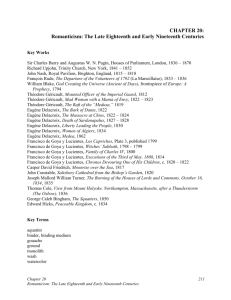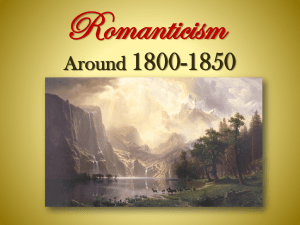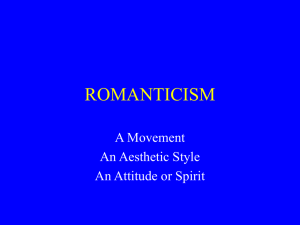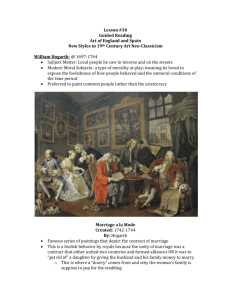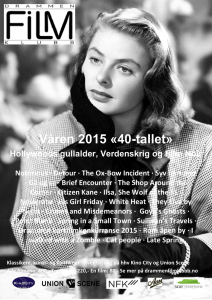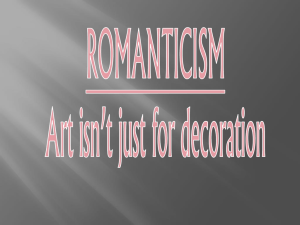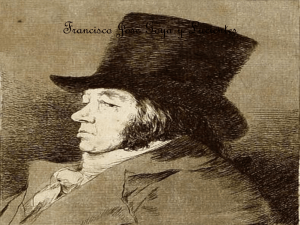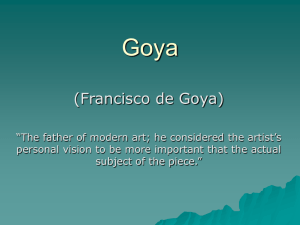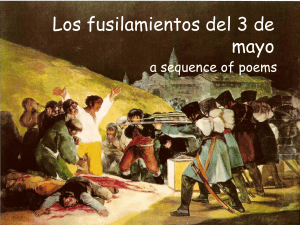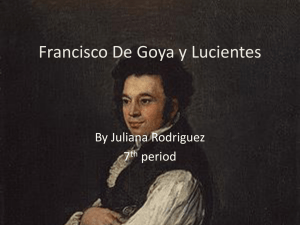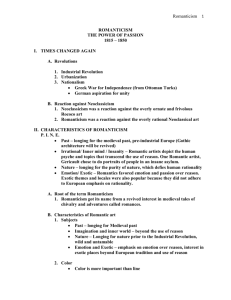AP Art History 20
advertisement
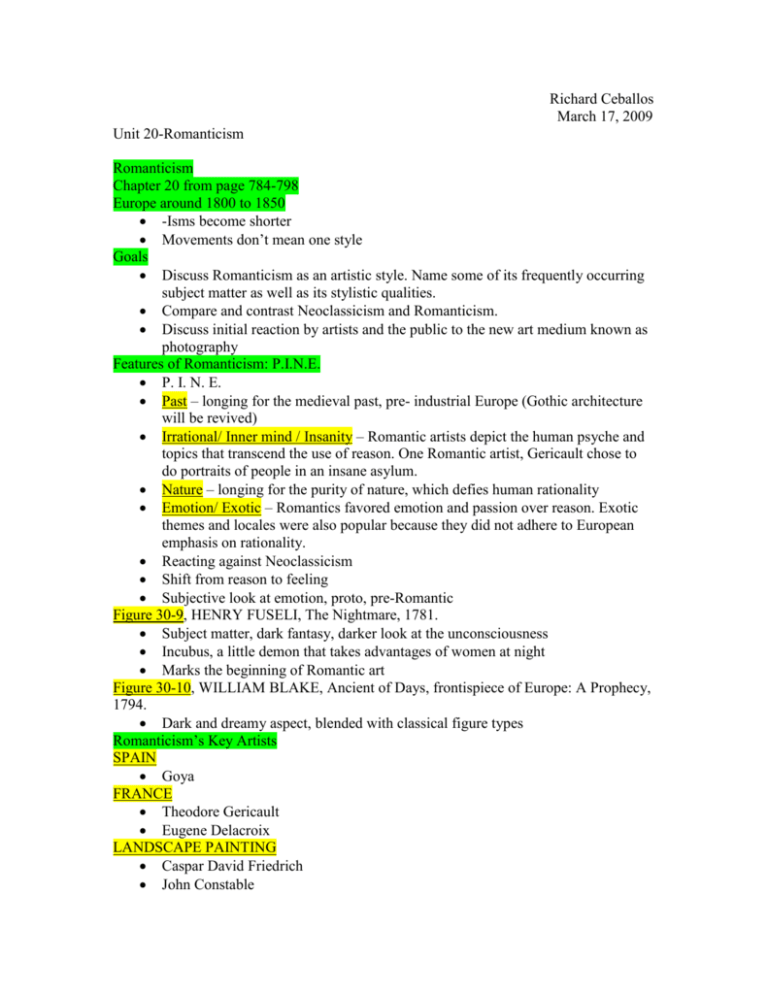
Richard Ceballos March 17, 2009 Unit 20-Romanticism Romanticism Chapter 20 from page 784-798 Europe around 1800 to 1850 -Isms become shorter Movements don’t mean one style Goals Discuss Romanticism as an artistic style. Name some of its frequently occurring subject matter as well as its stylistic qualities. Compare and contrast Neoclassicism and Romanticism. Discuss initial reaction by artists and the public to the new art medium known as photography Features of Romanticism: P.I.N.E. P. I. N. E. Past – longing for the medieval past, pre- industrial Europe (Gothic architecture will be revived) Irrational/ Inner mind / Insanity – Romantic artists depict the human psyche and topics that transcend the use of reason. One Romantic artist, Gericault chose to do portraits of people in an insane asylum. Nature – longing for the purity of nature, which defies human rationality Emotion/ Exotic – Romantics favored emotion and passion over reason. Exotic themes and locales were also popular because they did not adhere to European emphasis on rationality. Reacting against Neoclassicism Shift from reason to feeling Subjective look at emotion, proto, pre-Romantic Figure 30-9, HENRY FUSELI, The Nightmare, 1781. Subject matter, dark fantasy, darker look at the unconsciousness Incubus, a little demon that takes advantages of women at night Marks the beginning of Romantic art Figure 30-10, WILLIAM BLAKE, Ancient of Days, frontispiece of Europe: A Prophecy, 1794. Dark and dreamy aspect, blended with classical figure types Romanticism’s Key Artists SPAIN Goya FRANCE Theodore Gericault Eugene Delacroix LANDSCAPE PAINTING Caspar David Friedrich John Constable JMW Turner Goya Father of modern art, some say First he made cartoons for Rococo tapestries (designs for the artwork) Cartoons thought to be disposable Figure 30-11, FRANCISCO GOYA, The Sleep of Reason Produces Monsters, from Los Caprichos, ca. 1798. Goya supported French Revolution, became disillusioned with it Famous etching from Los Caprichos Personification of reason, bats and owls flying around reason symbolize ignorance and foolishness Charles IV bestowed Goya as the royal painter Figure 30-12, FRANCISCO GOYA, The Family of Charles IV, 1800. Different interpretations, Goya behind the painting Inspired by Las Meninas, very similar, 150 years apart Napoleon’s army came to Spain, put his brother on the throne after conquering Spain, Spanish people were not happy about his occupation Mass riots, French soldiers killed about 1,000 Spanish rebels Figure 30-13, FRANCISCO GOYA, Third of May 1808, 1814. Commemorated that day Very expressive, martyr’s death, a lot of emotionalism comes from the figures Goya’s “Black Paintings” Did series of paintings, had these frescoes in his villas, in his house Both formally and thematically Figure 30-14, FRANCISCO GOYA, Saturn Devouring One of His Children, 1819–1823. Story from mythology, beginning of the creation of the world Very dark, one interpretation (irrationality of getting old) Theodore Gericault Figure 30-15, THÉODORE GÉRICAULT, Raft of the Medusa, 1818–1819. Based on an actual event of a ship crash on the coast of Africa, captain’s fault, people left to die on the boat, made a raft out of ship debris, sailed around for 13 days, people dying, only about 15 people survived Expressing his outrage he felts toward the event Two crossing diagonals, people falling outside of the picture, Man vs. Nature Hope vs. Despair Figure 30-16, THÉODORE GÉRICAULT, Insane Woman 1822–1823. Died when he was 32 Death left room for a new primer French Romantic painter Known for his sophisticated use of colors Eugene Delacroix Figure 30-17, EUGÈNE DELACROIX, Death of Sardanapalus, 1827. Servants rebelling around, killing the women and horse Exotic painting with high key emotion The red of the bed unifies the whole image 3 years after, revolt, painted for the rebellion Figure 30-18, EUGÈNE DELACROIX, Liberty Leading the People, 1830. Allegorical figure in the middle, Liberty Different types of people fighting the government Liberty wearing a Red hat, symbol of freedom Figure 30-19, EUGÈNE DELACROIX, Tiger Hunt, 1854. Color becomes a stronger element Figure 30-20, FRANÇOIS RUDE, Departure of the Volunteers of 1792 (La Marseillaise), Arc de Triomphe, Paris, France, 1833– 1836. Named the relief after the national anthem Wearing clothing from antiquity Heightened emotionalism makes it Romantic
